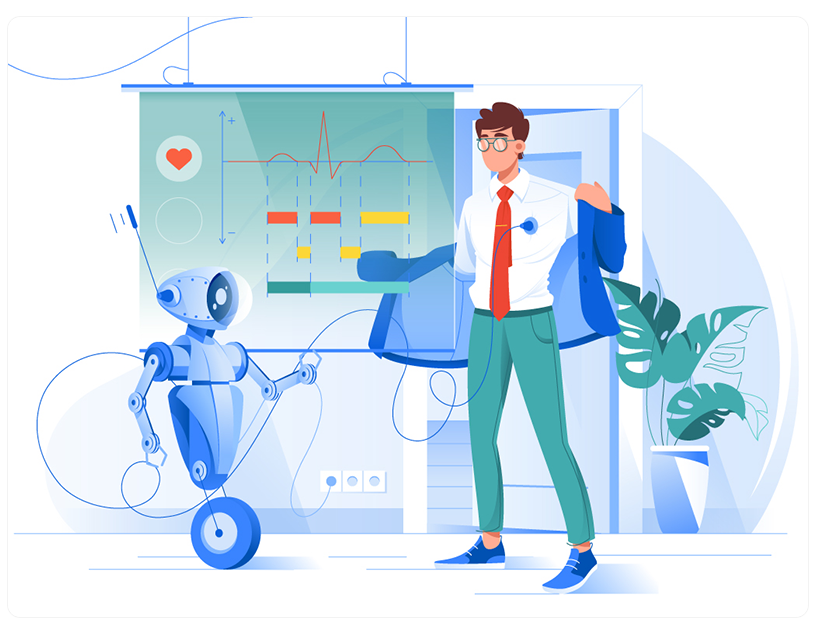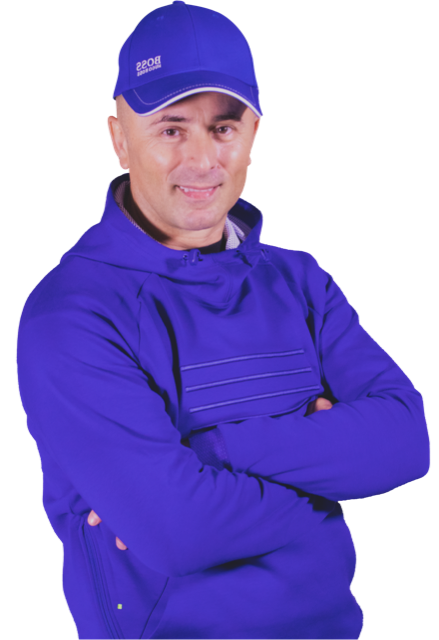The body’s most extensive system comprises bones, joints, muscles, and ligaments. This framework allows us to walk, run, drive, speak, write, build, play sports, and carry out any physical activity. Osteopathy, one of the most widely used complementary forms of medicine, aims to diagnose and treat mechanical problems in the framework.
For example, these problems may be caused by injury or stress, preventing the framework from functioning comfortably and efficiently. Osteopaths believe that when the body’s structure is sound, it will work like a well-tuned engine with minimal wear and tear.
Standing upright imposes a tremendous and constant strain on the mechanism. The force of gravity is particularly severe on the vertebrae of the spine and the cushioning discs between them. The spinal joints and their discs become weight-bearing in the upright position, a burden that poor posture exacerbates, increasing the likelihood of mechanical problems. Osteopaths use their hands to massage and manipulate the framework to restore normal, more comfortable function.
Standing upright imposes a tremendous and constant strain on the mechanism. The force of gravity is particularly severe on the vertebrae of the spine and the cushioning discs between them. The spinal joints and their discs become weight-bearing in the upright position, a burden that poor posture exacerbates, increasing the likelihood of mechanical problems. Osteopaths use their hands to massage and manipulate the framework to restore normal, more comfortable function.

Osteopathy can help
People with spinal problems, such as low back and neck pain, account for more than half of an osteopath’s workload. However, practitioners also relieve mechanical issues in many other parts of the body—often resulting from stresses at work. Tension headaches caused by the contraction of the small muscles at the base of the skull are another problem frequently treated by osteopaths.
Many patients have sustained sports injuries to muscles or joints of the hips, knees, ankles, feet, wrists, shoulders, or elbows. Older people suffering from the onset of OSTEOARTHRITIS can also find treatment beneficial. During pregnancy, many women develop back pain because of a change in posture, and they, too, can often be helped by osteopathic treatment.
What is osteoarthritis
Wear and tear on the joints, which eventually damages shock-absorbing cartilage between the bones, is the usual cause of the condition. Symptoms include pain, stiffness and deformed joints, mainly affecting the hips, knees, spine and fingers.
Finding an osteopathic practitioner
The General Council and Register of Osteopaths (GCRO) was established in 1936 on the recommendation of the health minister to produce a register of qualified osteopaths. The GCRO monitors the training and ethics in the practice of its members, who can put the letters MRO (Member of the Register of Osteopaths) after their names and use the title registered osteopath. They have completed a four-year full-time degree or diploma course at one of the three osteopathic colleges accredited and monitored by the GCRO.
Osteopathic treatment is not readily available on the National Health Service, but general practitioners are increasingly referring their patients to registered osteopaths.
You can ask at your local doctor’s surgery whether patients are referred to a particular osteopath in the area. If you cannot get advice there, look in the Yellow Pages for the names of registered osteopaths or ask for a list from the General Council and Register of Osteopaths, 56 London Street, Reading, Berkshire RG1 4SQ.
Consulting an osteopathic practitioner

The osteopath will first want to know how your symptoms began and what makes them better or worse. Your medical history and any current treatments you may be receiving will be noted. Then, the practitioner will carry out a detailed physical examination.
He will serve you while standing, sitting, lying down, and performing specific movements such as bending forward, backwards, and to the side.
The range and quality of movement in particular joints will be assessed, and the osteopath will examine them by touching the soft tissues, muscles, and ligaments to see if they are abnormally tense or stressed.
During this ‘structural survey,’ the osteopath diagnoses any abnormalities in the body’s framework, which other tests, such as conventional reflex testing with a small hammer, may confirm. Sometimes, an osteopath will ask for an X-ray, mainly if a recent accident or significant health crisis occurs.
If the examination shows that your condition is suitable for treatment, a course will be planned. If not, the osteopath may recommend that you see your doctor again. The length of treatment by an osteopath varies enormously. It may last several sessions for a long-standing condition, but a recent, acute problem may be relieved immediately. A treatment session usually lasts 20-30 minutes; most people find it relaxing and enjoyable. Several techniques may be used.
Soft tissue and remedial massage relieve tension and improve circulation. Gentle, repetitive movement of joints improves mobility and decreases tension in surrounding muscles.
Guided rapidly through their normal range of movement, osteopathic treatment may release fixed or malfunctioning joints, producing the clicking many associate with osteopathic treatment. Exercise, advice on posture, and relaxation techniques are often recommended; patients implement these at home between treatment sessions.
Cranial osteopathy may be used for some conditions, including head and facial pain. This involves applying gentle pressure to the head, upper neck, and upper back. Areas where strain or movement is restricted are helped painlessly at the point of tension until the condition is relieved.

Making the body’s machine run smoothly
An American doctor, Andrew Taylor Still (1828-1917), founded osteopathy in the mid-1870s after he became dissatisfied with orthodox medicine. He felt that stimulating the body’s natural powers of self-healing would be preferable to using the often dangerous drugs of his day.
His detailed knowledge of human anatomy and his earlier study of engineering made him interested in the body as a machine. He became certain that many illnesses arise when part of the body’s structure gets out of alignment. Manipulation could, he decided, restore the balance and cure the disease.
Strong initial opposition to Still’s ideas gradually dwindled in the United States, and now osteopathy is an unaccepted part of established medicine. Most modern research into osteopathy has been carried out in the United States, which now has 15 osteopathic medical schools and some 20,000 osteopathic physicians.
Osteopathy came to Britain at the turn of the century, and the British School of Osteopathy was established in London in 1917 by Dr Martin Littlejohn, one of Still’s pupils. Today, the school is one of the three accredited British training schools, but there are still only about 1400 registered osteopaths in Britain.
Osteopathy self-help on wheels
Car drivers often have poor and restricted posture behind the wheel, leading to back pain, stiffness in the neck and shoulders, and tension headaches. To help people avoid these discomforts and take the ‘pain’ out of driving, osteopaths suggest a set of easy-to-follow and implement procedures.
Ensure the car seat is adjusted so the steering wheel and pedals are all within easy reach. You should be sitting up straight with your knees slightly bent, but not so bent that they interfere with the steering wheel. To remind you to sit up straight every time you get in the car, ensure your bottom is as far back in the seat as possible. Then, straighten up and, if necessary, adjust the rear-view mirror to your needs.
Your arms should be slightly bent as your hands hold the steering wheel (preferably between nine and ten o’clock and between two and three o’clock if you imagine the wheel as a clock face). Adjust the seat to lean slightly back, making it easier to maintain a well-balanced and comfortable position for your neck and back.
If you have a back problem, you can buy or make a simple lumbar roll to tuck behind you and support the curve of your lower back. This will help prevent strain on your spine and shoulders.
When driving, check from time to time that your shoulders are relaxed. Keep your head upright with your chin tucked in; if it juts forward, the muscles at the back of your neck are under strain.
There are several relaxation exercises that you can do in a traffic jam or at traffic lights:
- Shrug your shoulders towards your ears and roll them backwards with your head bent slightly forward. Repeat two or three times.
- Tighten and relax your stomach muscles two or three times. You can do this while you are driving and at stops. It improves your posture and helps circulation in the legs.
- Tuck your chin close to your chest and then relax it back to normal. Repeat this several times, and the muscles at the back of your neck stretch gently.

An osteopath treating an injured knee
Sports injuries account for many joint problems, and here, an osteopath examines a patient who has twisted a knee while playing tennis. By making a structural survey of the problem area, the practitioner diagnoses the extent of the injury. He also asks the patient for her medical history, particularly if she has previously suffered any pain or discomfort in the knee.
After assessing the damage and deciding that the patient is a suitable case for treatment, the osteopath sets to work on the injured knee. He manipulates the malfunctioning joint back into working order and guides it through its normal range of pain-free movement. In addition, the gentle manipulation of the joint eases tension that has built up in the nearby muscles.
An orthodox view
Many doctors recognise the benefit of osteopathy for people suffering from mechanical problems and strain. More and more general practitioners refer patients to registered osteopaths, and more doctors have taken post-graduate osteopathy courses accredited by the GCRO. More than 100 doctors in Britain are now qualified registered osteopaths.
Conventional doctors would dispute the value of osteopathy for patients with non-mechanical symptoms. They see a correct diagnosis by a qualified medical practitioner as essential before deciding whether osteopathy is the proper treatment.
